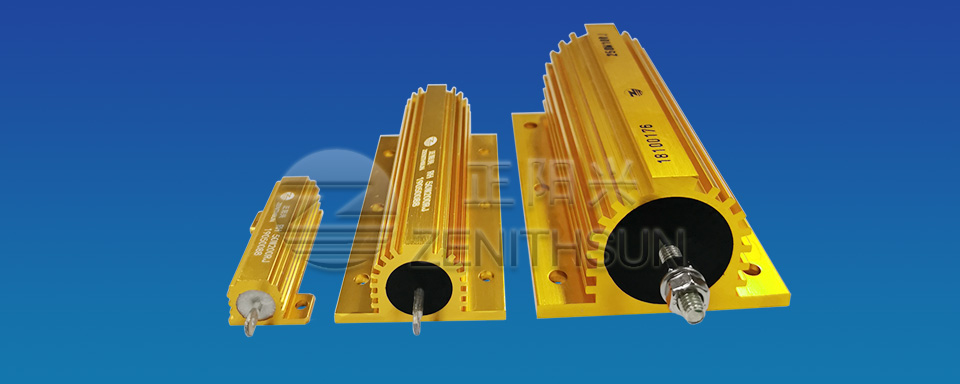LED Load Resistors are popular among customers for their stable performance, low resistance values, and attractive appearance. ZENITHSUN provides Gold Aluminum Housed Resistors with a power range of 5W-500W and precision range of ±1%, ±2%, and ±5%. These resistors function to control the circuit by using their own resistance value.
(LED Load Resistor)
1. Functions of LED Load Resistors
LED Load Resistors, as electronic components, primarily serve to limit, measure, and regulate current and voltage, and convert electrical energy into heat. Due to the selectable resistance values and high precision and stability, Golden Aluminum Housed Resistors are widely used in electronic devices. They are mainly used in low-frequency AC circuits for purposes such as voltage reduction, current distribution, load, feedback, energy conversion, and matching. They can also function in power circuits for current limiting and voltage division, as well as in oscillation circuits, attenuator adjustments inside transformers, and pulse forming circuits. In addition, Golden Aluminum Housed Resistors can be used for discharging filter level capacitors in rectifiers.
2. LED Load Resistors Wiring Method
The two commonly used connection methods for LED Load Resistors are the voltage regulation method for dividing voltage and the current control method for limiting current. The voltage regulation method involves connecting the resistors in parallel to change the circuit’s voltage and regulate it. On the other hand, the current control method involves connecting the resistors in series to change the current in the circuit and control it.
(LED Load Resistor)
LED Load Resistors are known for their high precision, low noise, and excellent heat dissipation performance, making them commonly used in the power amplifier section. However, they have small resistance values and are relatively expensive. These resistors find wide application in household appliances, medical equipment, automotive, railway, aviation, military equipment, as well as in current and voltage regulators in laboratories, and as excitation and speed control resistors in power generation equipment and DC motors.








